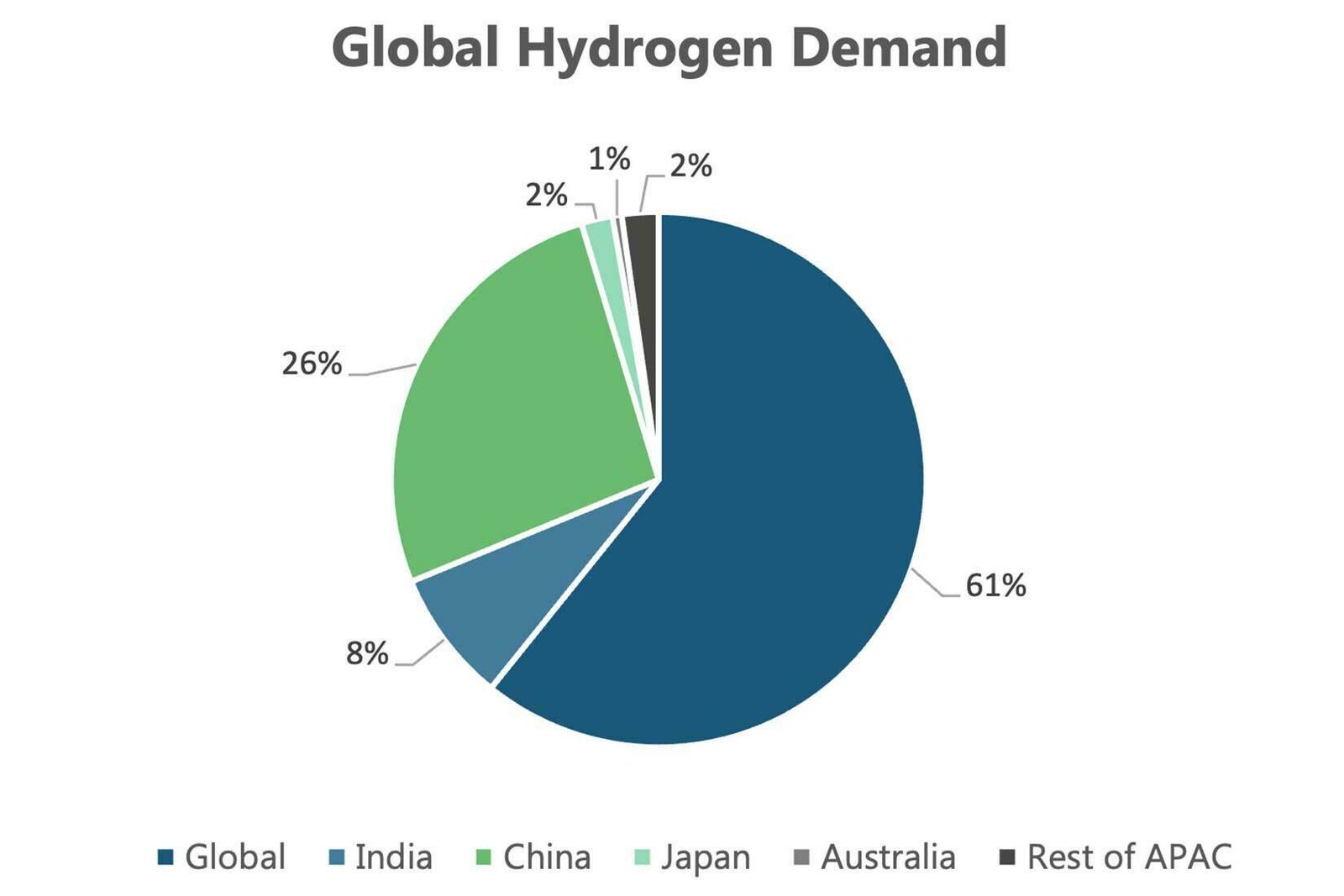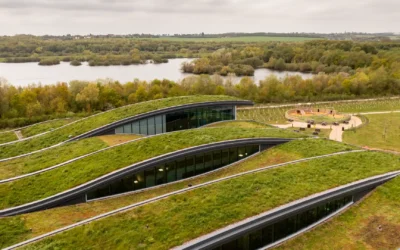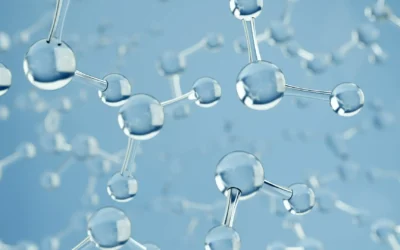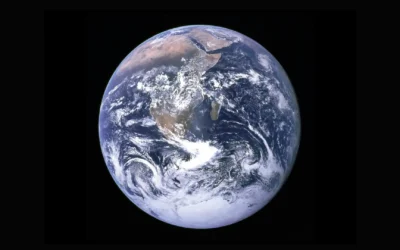• The world is in the middle of an energy transition and economies across the globe are looking for ways to curtail their emissions in order to meet their climate goals.
• China has set a target of producing 100 metric tons of hydrogen by 2060; Japan has set a target of 20 million tons of hydrogen per year by 2050; South Korea plans to produce 5.26 million tons of hydrogen per year by 2040.
• The region possesses significant low carbon hydrogen production potential and is expected to become a key player in the global energy transition.
The world is in the middle of an energy transition and economies across the globe are looking for ways to curtail their emissions in order to meet their climate goals. Countries in the Asia-Pacific region are looking to explore the hydrogen option in this regard, as these countries are developing their national hydrogen strategies (certain regional countries already have them) that have set goals for a few decades down the road.
China has set a target of producing 100 metric tons of hydrogen by 2060; Japan has set a target of 20 million tons of hydrogen per year by 2050; South Korea plans to produce 5.26 million tons of hydrogen per year by 2040. Australia aims to reduce the production cost of clean hydrogen to below USD 2/kg while India is targeting the production of 5 million tons of green hydrogen by 2030. Nearly 40% of the global demand for hydrogen is generated from the APAC region and, within APAC, the majority of the demand comes from China, which accounts for 26% of the global demand. China is followed by India in the region, which accounts for 8% of the global hydrogen demand.
Opportunities in the Asia-Pacific Region
The Asia-Pacific countries are focusing on producing low carbon and carbon free hydrogen; these include China, Australia, New Zealand, South Korea, and Japan. India, Australia, and parts of Southeast Asia have significant solar energy potential while New Zealand has tremendous offshore and onshore wind potential which can be harnessed to produce carbon free hydrogen in the region. Australia is looking into long-term prospects of deriving hydrogen from coal using the Carbon Capture, Usage and Storage (CCUS) technology. China is looking to tap into all the available resources to produce hydrogen in the country including renewable energy, natural gas, and coal with CCUS. New Zealand only focuses on carbon free hydrogen that can be produced from renewables, while we are observing that Singapore plans to shift to renewable hydrogen in the future. Japan, interestingly, treats hydrogen from renewables and natural gas with CCUS equally and refers to them as carbon free hydrogen. South Korea has plans to utilize 70% of the renewable hydrogen by 2040.

Figure 1: Vision of regional countries regarding hydrogen.
Source: Power Technology Research

Figure 2: Hydrogen demand from APAC.
Source: Power Technology Research
Challenges to the Adoption of Hydrogen
There are a number of challenges hindering the adoption of hydrogen in the Asia-Pacific region, such as high production cost, issues related to the transportation of hydrogen, lack of proper infrastructure, and implementation of a regulatory framework and policies.
High production cost
• The production of hydrogen from renewables is relatively more expensive than fossil fuels.
• The cost of production of green hydrogen is estimated to be USD 2.5-6.80/kg, whereas cost of blue hydrogen production is estimated to be USD 1.40-2.40/kg.
• In order to make green hydrogen cost competitive, the cost of production needs to decrease to USD 2/kg.
Hydrogen transportation
• In order to transport hydrogen over large distances or on maritime routes, hydrogen needs to be either liquefied or converted into ammonia before being loaded onto specialized vessels.
• The conversion and transportation of hydrogen involves the consumption of energy and energy losses to a certain extent.
• Approximately 0.05% to 0.25% of the hydrogen boils off per day during shipping and storage.
• There is huge equipment cost involved, as well, because the liquification of hydrogen requires cryogenic temperatures.
• Ammonia synthesis and reconversion involves significant energy consumption, which adds to the overall cost of hydrogen.
Lack of proper infrastructure
• Significant investment is required to develop infrastructure for the widespread deployment of hydrogen.
• Currently existing natural gas pipelines can only accept a limited concentration of hydrogen. These pipelines need to be retrofitted so that they can accept concentrated and pure hydrogen.
• The refueling infrastructure is inadequate for the widespread deployment of FCVs.
Implementation of a regulatory framework and policies
• Laws concerning hydrogen usage and domestic safety standards already exist in certain countries of the region.
• There is a need to implement operational, environmental, safety, and technical standards so that hydrogen is utilized, transported, and stored properly.
• Substantial work is required to ensure that detailed rules and a regulatory framework concerning hydrogen is established.
Looking Ahead
Despite there still being challenges in the way of hydrogen adoption at a commercial scale in the region, it is expected that the hydrogen industry would significantly grow in the Asia-Pacific. This is mainly due to a drop in the production costs of hydrogen, followed by increased involvement by the private sector as well as government assistance. Power Technology Research believes that the Asia-Pacific is emerging as the future demand center for hydrogen as several countries in the region have significant support from their governments. The support is aimed at increasing the utilization of hydrogen as a clean energy source and the deployment of associated hydrogen infrastructure. The region possesses significant low carbon hydrogen production potential and is expected to become a key player in the global energy transition.
Hydrogen Service Overview
The research presented in this article is from PTR's Hydrogen service. For information about this service please submit a request shown below.
Contact Sales:
Europe
+49-89-12250950
Americas
+1 408-604-0522
Japan
+81-80-7808-1378
GCC/Rest of APAC
+971-58-1602441
More about our:
Hydrogen Market Research
Recent Insights
US and EU Strategies in Smart Buildings
Download Service Overview The EU and USA aim to decarbonize their building sectors to meet emission reduction targets. Initiatives like the Home...
Setting Sail with Hydrogen: Challenges, Opportunities, Policies, and Industry Initiatives
The maritime industry faces intense pressure to reduce greenhouse gas (GHG) emissions, curb environmental impact, and sail towards a greener future....
COP through the Ages
This infographic takes a cursory glance at the most significant achievements of the Conference of Parties through the years and offers a chance for...


